
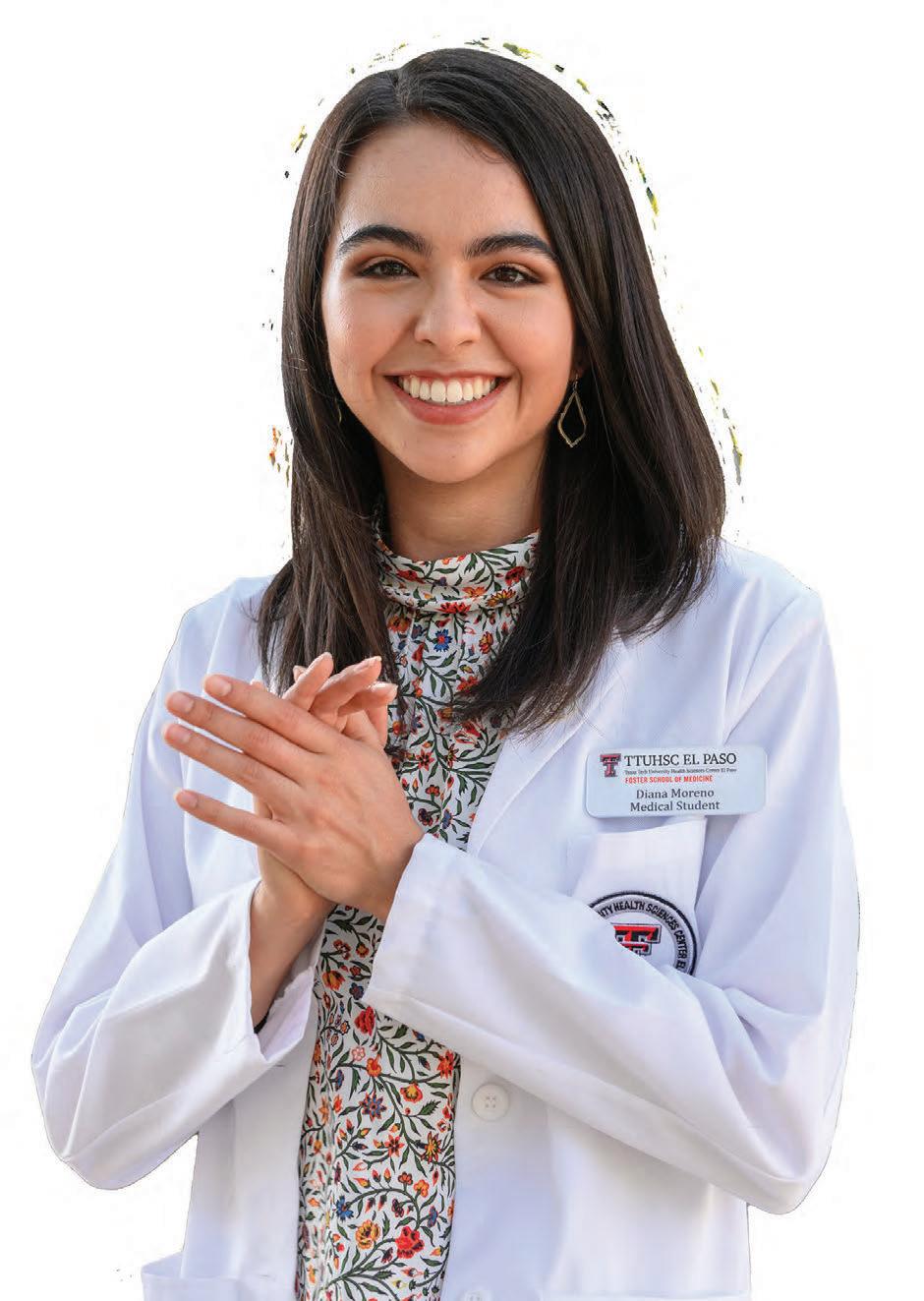
TTUHSC El Paso Marks 10 Years as El Paso’s Health Sciences Center
2023 ushers a new decade and renewed commitment to improving lives in our Borderplex
A 10-year anniversary is the perfect time to celebrate past accomplishments as well as new beginnings.
In 2023, Texas Tech University Health Sciences Center El Paso marks its 10th year as an independent university within the Texas Tech University System. Throughout 2023, we’ll celebrate this remarkable milestone; and of course, we’ll share the celebration with the El Paso community that supported the vision of a health sciences center for our Borderplex region.
We’re proud of the positive impact we’re making on El Paso, the U.S.-Mexico border region, and across the country and globe. And speaking of new beginnings, I welcome you to HERE, our newly rebranded university magazine.
In these pages, I invite you to learn how TTUHSC El Paso has worked over the past 10 years to fulfill its mission of improving the lives of people in our culturally diverse community through excellence in education, research and world-class patient care.
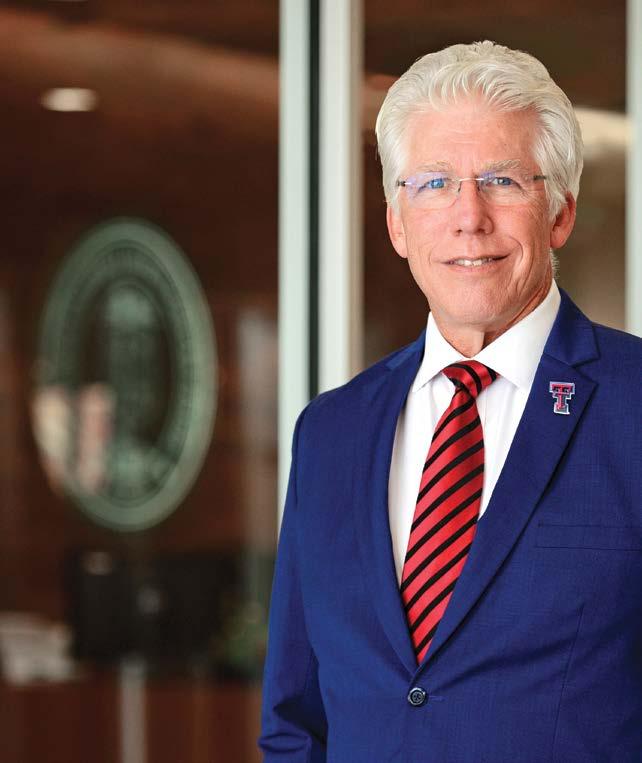
To our students, faculty, staff, alumni — and our community supporters — I send a big “Thank you!” for our 10 years of success!
Richard A. Lange, M.D., M.B.A. Rick and Ginger Francis Endowed President
www.ttuhscepimpact.com 1
El Pasoan and second-year Foster School of Medicine student Diana Moreno represents, at its core, the mission of TTUHSC El Paso. Through scholarships and access to a medical degree in her hometown, Diana is a homegrown health care hero focused on improving lives in our Borderplex community.
4 Closing the Distance

New program eliminates long-distance travel for rural epilepsy patients seeking routine services



2 HERE | TTUHSC El Paso
Full-Circle: Dental Student Dreams Become Reality Impacting the Next Generation Our Story in Numbers Empowering Borderplex Talent 32 36 40 50
Feature Stories
each issue: Inside:
In
On the cover:


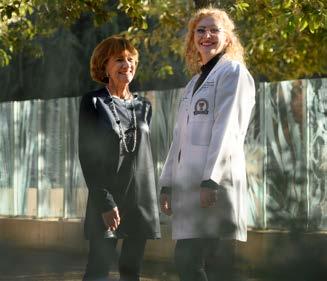

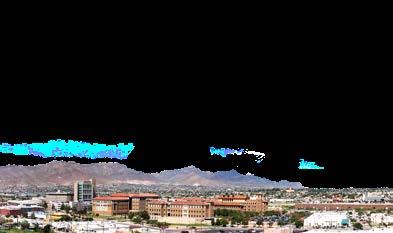
www.ttuhscepimpact.com 3 20 A Healing Destination Cancer patient finds hope in team-based approach at Texas Tech Physicians of El Paso Rick and Ginger Francis Endowed President Richard A. Lange, M.D., M.B.A. HERE is produced annually by the TTUHSC El Paso Office of Institutional Advancement: Vice President of Institutional Advancement Andrea S. Tawney, Ph.D. Editor-in-Chief Assistant Vice President of Marketing & Communications Veronique Masterson Director of Communications Danielle Urbina Assistant Vice President of Development Craig Holden Senior Director of Marketing & Creative Services Daphne Griffin Senior Director of Corporate & Foundation Relations Janine Young Project Manager Bonnie Elliott Online Editors Hike Briano Gerardo Mata Senior Editors Aaron Bracamontes David Peregrino Writers Leonard Martinez Charlotte Tallman P.J. Vierra Photography Tommie Morelos Video Diego Davila Art Director Luz Najera Designers Warren Love David Madrid Sandra Salas Media Relations Patrick Espinoza Marty Otero Social Media Idaly Tiscareno Katherine Vandertulip Development Brianna Huffman Desma Montellano Lori Navarrete Meriah Rivera Christopher Rosenbluth Business Support Paola Flores Rosa Talamantes






6 HERE | TTUHSC El Paso


www.ttuhscepimpact.com 7




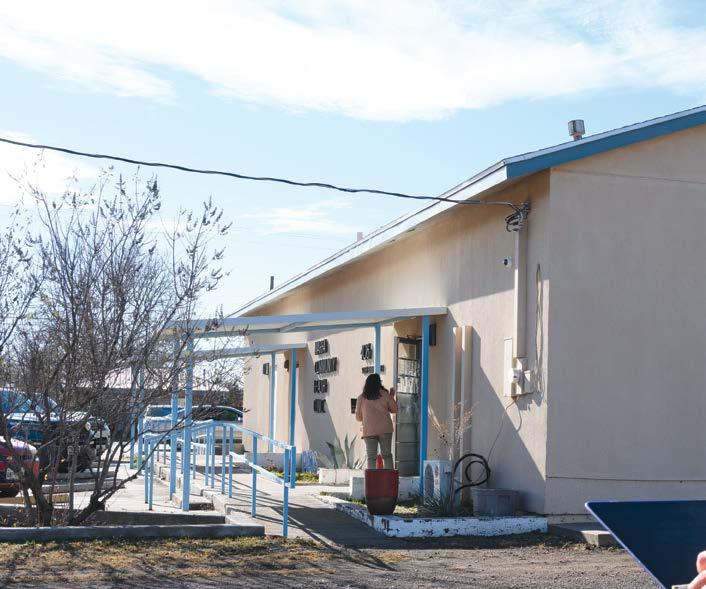

10 HERE | TTUHSC El Paso
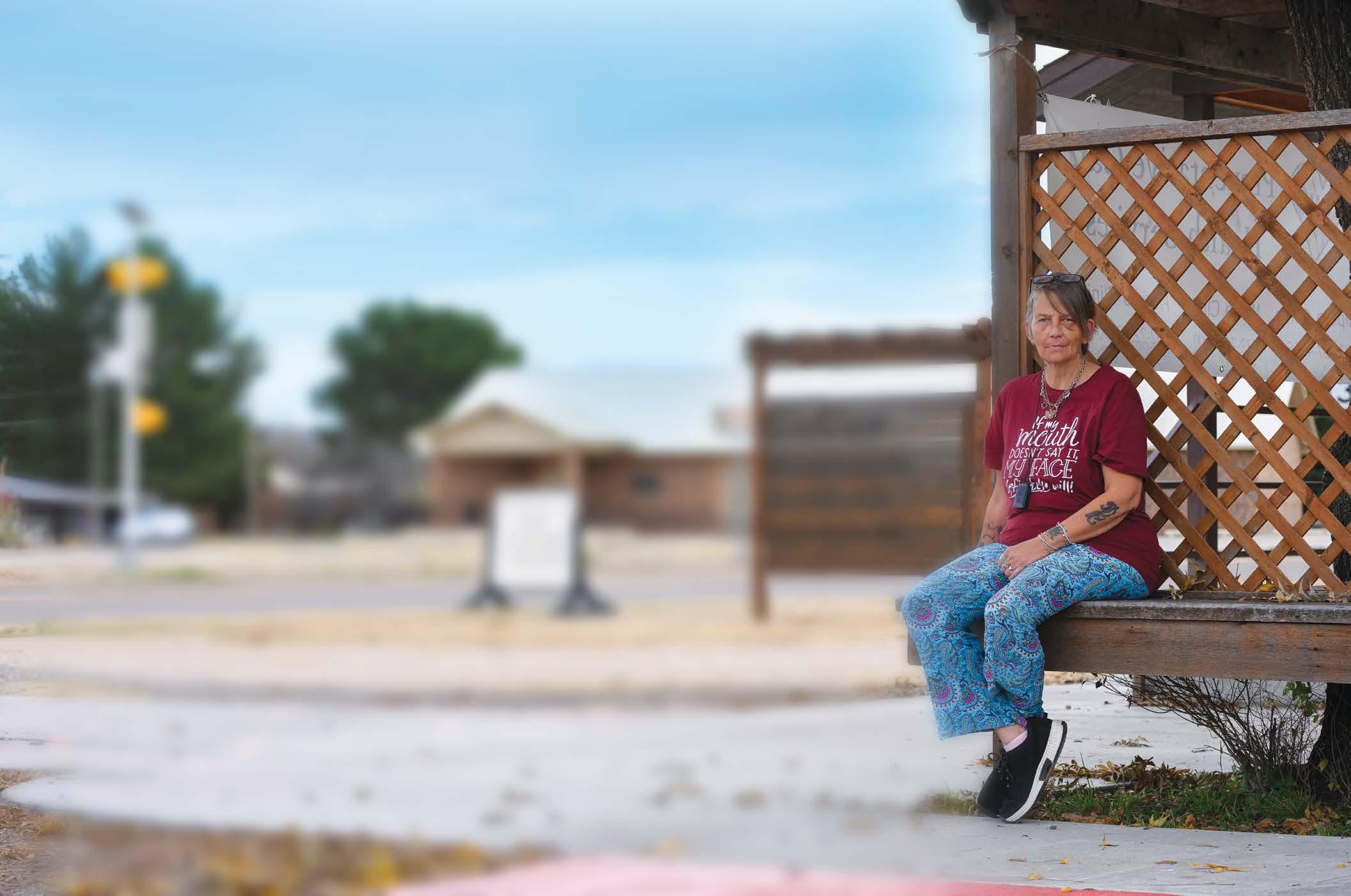



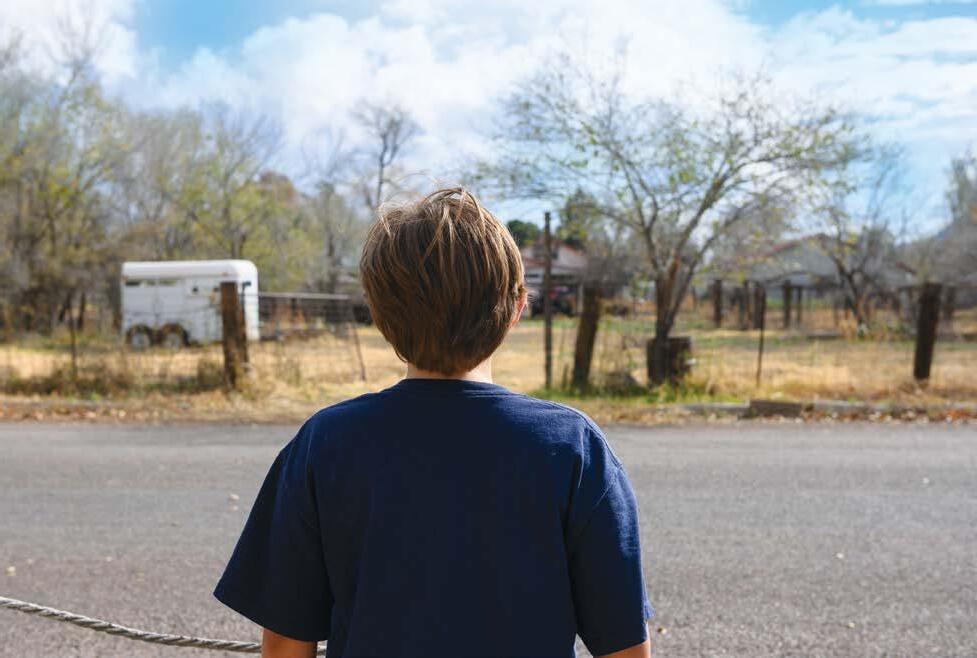

14 HERE | TTUHSC El Paso

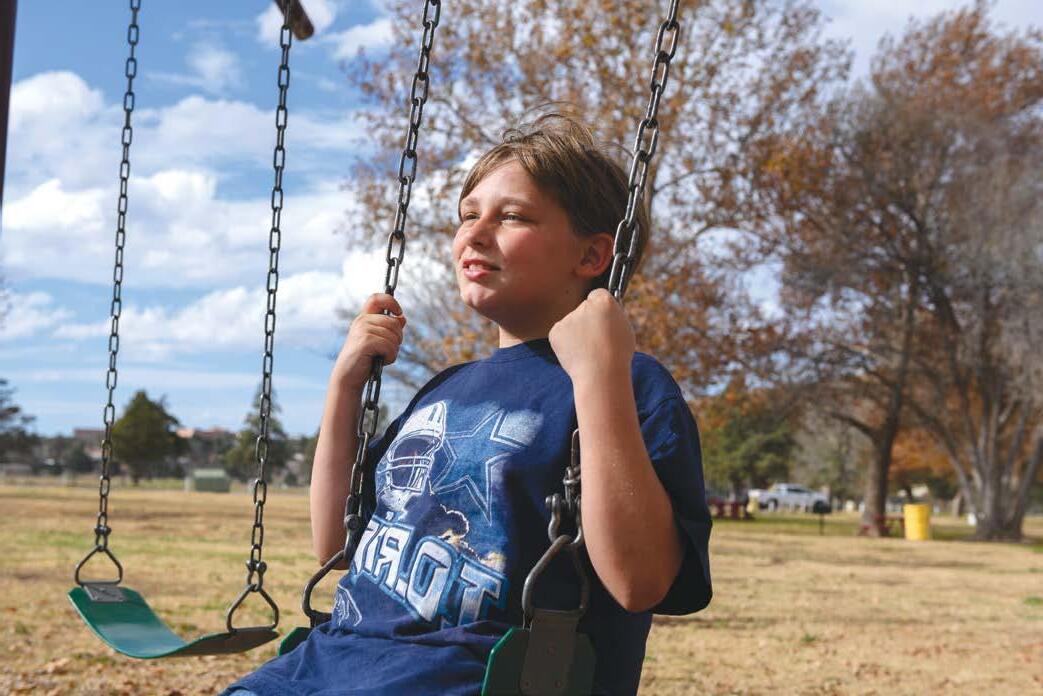

www.ttuhscepimpact.com 15
Goodnight, Mouse
Sleep’s link to sepsis could be a wake-up call for hospitals
By Charlotte Tallman
Goodnight clocks, and goodnight socks. Goodnight little house, and goodnight mouse.
Wendy Walker, Ph.D., loves the sleep-inducing poem, “Goodnight Moon.”

But Dr. Walker, a researcher at Texas Tech University Health Sciences Center El Paso, knows the classic children’s bedtime story is no match for the beeping noises, bright lights and unexpected check-ins hospital patients experience.
At the university’s Center of Emphasis in Infectious Diseases, she’s studying patients’ quality of sleep and its
connection to sepsis, a life-threatening complication of an infection.
“We know it’s important to get a good night’s sleep for our health, but many of us don’t get enough. That’s especially true for hospital patients because their sleep is constantly disrupted,” said Dr. Walker, an assistant professor who has been with the research center since 2014.
According to the Centers for Disease Control and Prevention, adults need seven or more hours of sleep in a 24-hour period for the best health and well-being. Missing sleep doesn’t just cause drowsiness, but it can increase the risk for chronic diseases and conditions,
16 HERE | TTUHSC El Paso
In hospitals, a good night’s sleep is often hard to find, due to lights, noise and other disruptions.
including Type 2 diabetes, cardiovascular disease, obesity and depression. Even if a person feels they are adapting to sleep restriction (with an extra cup of coffee, for example), the body can show significant declines in physical and mental performance.
The National Institutes of Health’s National Heart, Lung and Blood Institute recently awarded Dr. Walker a $489,160 grant for “Goodnight Mouse: Sleep and Sepsis,” a preclinical study using mouse models.

“

www.ttuhscepimpact.com 17
“
We know it’s important to get a good night’s sleep for our health, but many of us don’t get enough. That’s especially true for hospital patients because their sleep is constantly disrupted.
— Wendy Walker, Ph.D.
It allows Dr. Walker to replicate what happens when a patient’s sleep is disrupted and how that disruption is connected to sepsis. The data may lead to interventions to improve hospitalized patients’ quantity and quality of sleep or treatments to reverse the effects of poor sleep.
Sepsis is the body’s extreme response to an infection. Sepsis occurs when an existing infection triggers an inflammatory chain reaction throughout the body, and it can rapidly lead to tissue damage, organ failure and death.

According to the CDC, each year about 1.7 million adults in America develop sepsis, and at least 350,000 who develop


18 HERE | TTUHSC El Paso
“
“
I’m passionate about mentoring, and because we have such a fantastic graduate school, we can offer opportunities these students might not otherwise have.
— Wendy Walker, Ph.D.
the condition die in the hospital or are discharged to hospice care. One in three patients who die in a hospital has had sepsis during that hospitalization, making it the leading cause of death in hospitals.


The three-year NIH grant will provide research opportunities for master’s-level students at the Francis Graduate School of Biomedical Sciences. The school enrolls a high percentage of underrepresented Hispanic and other minority students, many of whom are first-generation college students. In addition to the research experience, students will have opportunities to present at national conferences.
“I’m passionate about mentoring, and because we have such a fantastic graduate school, we can offer opportunities these students might not otherwise have,” Dr. Walker said. “It’ll help students and our community. They’ll become biomedical researchers or doctors with solid research behind them, and many will stay, addressing the critical health care shortages in our region.”

www.ttuhscepimpact.com 19
A Healing Destination
Phyllis Davis, a 33-year cancer survivor, finds hope in the team-based approach at Texas Tech Physicians of El Paso
 By Charlotte Tallman
By Charlotte Tallman
Thirty-three years ago, Phyllis Davis went to a routine checkup and had her first mammogram. Two days later, she was facing one of the hardest decisions of her life: getting a mastectomy and chemotherapy to remove cancer in her breast or a lumpectomy and radiation. She chose the mastectomy.
“To say I was shocked to find out I had cancer was an understatement,” Davis said. “Physically, the surgery and chemo were unpleasant but not terribly traumatic. Emotionally, I was having trouble coping. I had two teenage sons I was determined to be there for and a husband I wanted to grow old with. I was terrified of dying despite reassurances from my doctors that I would be fine.” Davis was fine until she wasn’t.
In 2001, her arm started going numb, and in 2002, a biopsy of a lymph node showed cancer had returned.
Davis’ previous caregivers asked her to call if she started feeling sick. That didn’t sit right with her, so she sought treatment at the Texas Tech Physicians of El Paso Breast Care Center, where oncologist Sumit Gaur, M.D., biopsied her tumor and recommended a change in medication.
“I feel blessed to have found him because he searched for my best treatment and worked with my care team to provide it,” Davis said. Cases like Davis’ are why TTP El Paso is known for worldclass patient care. TTP El Paso is the region’s most extensive multispecialty medical group practice, with over 250 specialists who are also faculty at the Foster School of Medicine.
20 HERE | TTUHSC El Paso

www.ttuhscepimpact.com 21
Phyllis Davis, left, found healing for body and mind at TTP El Paso. Neurologist Dr. Darine Kassar is part of a team that takes a holistic approach to caring for cancer patients.
Thanks to the incredible specialists and world-class facilities at Texas Tech Physicians of El Paso, I can live an upbeat life, limit negative thoughts and do everything I can with the days I have.
— Phyllis Davis
The joy of family, friends and furry friends: A cancer diagnosis hasn’t changed Phyllis Davis’ positive outlook on life.
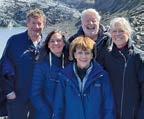



TTUHSC El Paso Assists With Preventive Care
From April 2019 to December 2022, 334 underinsured or uninsured women received breast cancer screenings at the Foster School of Medicine’s Medical Student Run Clinic, thanks to $73,000 in grants from the American Breast Cancer Foundation, National Breast Cancer Foundation and Texas Medical Association.
22 HERE | TTUHSC El Paso “
“
“I’m entering my 33rd year of breast cancer, and I’m fortunate that TTP El Paso is interested in all aspects of my case,” said Davis, who also worked with gastroenterologist Sherif Elhanafi, M.D., and neurologist Darine Kassar, M.D. “From the oncologist to the neurologist, all my doctors are exceptional. I have the care I need and wouldn’t want to trust anyone else with it.”
Across the Borderplex, that care is essential. According to the National Cancer Institute, breast cancer incidence has increased in El Paso County over the past decade, with a rate of 106 cases per 100,000 women. It’s the primary cause of cancer death among Hispanic women, and a substantial number of cases in Hispanic women are the more aggressive triple-negative breast cancers. El Paso County has a population of 840,000, of which 83% identify as Hispanic.
Patients with cancer often face additional complications beyond the cancer itself or due to treatments. Complications vary depending on the type of cancer, if it has spread and what treatment methods are in use, and often include pain, bone complications, gastrointestinal issues and neurological problems.
“Patients with cancer already suffer from cancer itself, including the side effects of treatment and the mental effect imposed by such diagnosis,” said Dr. Kassar. “Having access to multiple specialties at TTP El Paso allows patients to address different concerns in one convenient location. It also allows the providers to communicate with each other concerning the treatment plan for each patient.”
In addition to focusing on the diagnosis and treatment of cancer, the Breast Care Center provides emotional support for patients through the Breast Cancer Survivorship Clinic.

Like Davis, many survivors have ongoing physical and psychological needs following a cancer diagnosis, but breast cancer survivorship care is relatively new. Because of new treatments and early detection, there are more survivors than ever, with more than 4 million breast cancer survivors in the U.S. today, according to the Susan G. Komen Foundation.
“Thanks to the incredible specialists and world-class facilities at Texas Tech Physicians of El Paso, I can live an upbeat life, limit negative thoughts and do everything I can with the days I have,” Davis said.
www.ttuhscepimpact.com 23
Treating a Humanitarian Crisis
In a no-frills clinic, TTUHSC El Paso faculty teach students while caring for migrants’ medical emergencies
By Aaron Bracamontes
Just days after Christmas, while other children played soccer between rows of cots lined up in a mess hall, one little boy sat in the shelter’s basement playing with a stuffed monkey in a graduation hat. The tongues of his shoes, set free by the missing shoelaces, flapped as his feet dangled from the chair.

Seated in front of an ancient, broken 15-cent-a-Pepsi vending machine, he glanced up at handwritten signs taped to the wall. Next to a list of airline and bus companies’ phone numbers was one sign seemingly intended for him.
“Estas en El Paso, Texas,” the piece of paper told him.
For a migrant, just knowing where you are is vital information after a brutal, disorienting trek through unknown lands. The boy and his family had left Ecuador, traveling to the U.S. via Mexico by bus, hitch-hiking and on foot.
On the other side of a privacy barrier made of plywood and shower curtains, a woman, Marilisa, is sitting barefoot. She described the sharp pain in her foot to two Texas Tech University Health Sciences Center El Paso faculty members, who practice medicine at Texas Tech Physicians of El Paso.
24 HERE | TTUHSC El Paso

www.ttuhscepimpact.com 25
The basement has transformed into a makeshift clinic as a part of the collaborative Border Health Program, launched by Doctors of the World USA, an international humanitarian organization, which is a widely recognized expert in migrant and refugee health around the world. The waiting room offers patients metal chairs, and medical students and volunteers pour over paperwork on a folding table. But despite its humble appearance, it’s a clinic where TTUHSC El Paso students, residents and faculty provide quality, compassionate medical care to migrants and asylum seekers.
One of the two physicians that day included Glenn Fennelly, M.D., M.P.H., professor and chair of the Foster School of Medicine’s Department of Pediatrics. He’s also the Doctors of the World USA board president. Aside from physical ailments, the clinic has helped migrants with seasonal illnesses and getting proper prescriptions.
“Many of them have chronic conditions such as diabetes, asthma or high blood pressure. In some cases, their medication was confiscated by Customs and Border Protection,” Dr. Fennelly said. “There may be worsening of these chronic diseases during their journey. Exposure to respiratory viral infections can be a setup for bacterial infections. And there is some level of malnutrition along with not being vaccinated that puts them at risk for severe viral illnesses, such as the flu or COVID-19.”
After getting painful splinters removed from her foot, Marilisa left the basement clinic, ready to sleep on a cot before continuing her journey to Florida. As she exited, she passed the boy without shoelaces and his mother, Maria, who was preparing to meet with a doctor. She, along with her family of six, had spent the last three weeks making the trek from Ecuador. After ignoring her sore throat for so long, Maria was finally able to see a doctor.
“We crossed through the jungle, and it was a difficult journey to endure with four little children. Some days we wouldn’t eat and other days we would just walk,” Maria said while fighting back tears. “It was such a long trip, and I felt a huge relief when the doctors could see me. I’m just grateful we’re here and everyone is healthy. I didn’t know if we would all make it.”
After a stop in El Paso, Maria and her family will continue to New York.
Maria’s sore throat was a mild infection, or a cold. She’s lucky compared to others. In 2021, CBP recorded 557 Southwest border deaths. Dehydration and other heat-related risks are prevalent in the summer, and the cold can be unforgiving in the winter. With more than 200,000 migrants crossing per month and CBP facilities lacking sufficient medical resources, the Doctors of the World USA Border Health Program partnership with TTUHSC El Paso is critical.
“Doctors of the World and our partners stay after the news cycle ends, past the first wave of the crisis. We want to contribute to long-term solutions for vulnerable populations,” Dr. Fennelly said. “The recent border crisis aside, El Paso’s always expected to have migrants crossing the border or reporting to CBP. We want to be prepared always for a humanitarian response to health care needs or medical emergencies that may arise.”
Part of that response is introducing medical students and residents to the clinic as part of their clinical rotations. The experience will prepare them for unique health issues they’ll encounter in the Borderplex region.
On days the clinic is open, four to five Foster School of Medicine students are on hand to help with triage and intake. Second-year medical student Soroush Omidvarnia has helped at the clinic a few times. As a migrant from Iran who came to the United States eight years ago with his family, he knows any help can be a godsend for the patients he sees.
“They’re dealing with all this chaos in so many aspects of their lives. The uncertainty with their health care is something we’re positioned to help with here at the clinic,” Omidvarnia said. “We want to see what gaps they have in their health care and provide any assistance we can with that.”
The clinic also aids with more immediate emergencies such as sexual assault injuries and severe sprains from the journey. However, other injuries require complex surgeries. Some of the most serious are injuries from border wall falls, which have increased more than fivefold since 2019, according to an American Medical Association report.

A three-week trek from Ecuador took a toll on Maria, who came to the clinic for treatment of a sore throat. Migrants often arrive with dehydration and other ailments related to many days of exposure to the sun and harsh weather.

Just seeing a smiling face, a reassuring voice, lets them know they’ve arrived and are welcome in this clinic. That’s something we want to build on and let them understand we are trying to take care of their health care needs.

 — Glenn Fennelly, M.D., M.P.H., professor and chair of the Foster School of Medicine’s Department of Pediatrics
— Glenn Fennelly, M.D., M.P.H., professor and chair of the Foster School of Medicine’s Department of Pediatrics
28 HERE | TTUHSC El Paso
“ “
After traveling for days, Marilisa arrived at the clinic with a sharp pain in her foot. Doctors brought her relief after finding and removing several splinters from her foot.
Texas Tech Physicians of El Paso’s Orthopaedic Surgery and Rehabilitation Department’s trauma team, directed by Adam Adler, M.D., FAAOS, has leading experts on high-impact injuries sustained by migrants who fall off the border wall. The damage to bones, joints and surrounding muscles from a 30-foot fall is comparable to high-speed car wrecks, with some key differences.
“In a crash, the vehicle absorbs a lot of the energy from the collision, and the victim receives paramedic care within minutes. When falling off the wall and smashing into the ground, all that impact is absorbed by the body,” Dr. Adler said. “The wounds get complicated by the desert elements, while lying there for hours or even a day. I’ve seen injuries with the bone sticking out and dirt still on it.”
Most of the border wall injuries cause severe swelling, requiring pins and braces to stabilize the injury prior to surgery. Following a definitive surgery, the patients often need follow-up exams and procedures – which in the case of the migrants may never happen, leading to life-long complications sometimes resulting in amputation.

Despite the dire circumstances, Dr. Adler said there is no team in the world better equipped to handle both the severity and quantity of these border injuries.
“You have about 10 of these cases a year in other parts of the country, while we see at least 10 a month. We became experts by necessity, but no one has more experience with these injuries than us,” Dr. Adler said. “There are only so many in the Borderplex capable of handling these surgeries, and they either work at or are associated with TTUHSC El Paso and TTP El Paso. And we’re training the next generation. Our residents are more than capable of treating these complex injuries going forward.”
Of course, not every traumatic event shows physically. For many migrants, and especially children, the entire process of relocating to a different country along with any unsettling events they have witnessed in their home country or on the journey, can leave lasting damage.
www.ttuhscepimpact.com 29
For years, TTUHSC El Paso Department of Psychiatry residents and fellows provided psychiatry treatment to migrant adolescents. Many of those young patients have displayed a wide-variety of conditions that need attention, said Cecilia De Vargas, M.D., associate professor and program director for the Child and Adolescent Psychiatry Fellowship Program.
“From the moment they left their countries they have been under constant stress. That includes when they arrive and are detained, processed and placed in a shelter with perhaps hundreds of other families,” Dr. De Vargas said. “Even when they were in their countries, they experienced turmoil. They need help.”
Dr. De Vargas said many youth are diagnosed with anxiety, depression and post-traumatic stress disorder. Some have thought about or attempted to commit suicide.
“And just like any other injury, the longer they go untreated, the worse their problems get,” Dr. De Vargas said.
While some children remain in El Paso for more than a year, others may only be here for weeks. That’s why it’s vital to diagnosis them and provide referrals for treatment at wherever their final destination is.

There’s no easy way to deal with a humanitarian crisis. But in times of uncertainty, Texas Tech Physicians of El Paso are able to provide treatment and TTUHSC El Paso faculty can provide the education for tomorrow’s health care heroes to continue helping those in need.
Omidvarnia said helping others in precarious situations is part of why he got into medicine. Not every ailment can be cured with medicine, but being there with a smile and some reassurance may be exactly what the body needs.
“Right next to health care, comfort is the most important thing we can give,” he said.
30 HERE | TTUHSC El Paso
We crossed through the jungle, and it was a difficult journey to endure with four little children. Some days we wouldn’t eat and other days we would just walk. It was such a long trip, and I felt a huge relief when the doctors could see me. I’m just grateful we’re here and everyone is healthy. I didn’t know if we would all make it.
— Maria

www.ttuhscepimpact.com 31
“
“


32 HERE | TTUHSC El Paso




www.ttuhscepimpact.com 33






34 HERE | TTUHSC El Paso








www.ttuhscepimpact.com 35



www.ttuhscepimpact.com 37

38 HERE | TTUHSC El Paso








42 HERE | TTUHSC El Paso












www.ttuhscepimpact.com 45



Heart of the Community


In 2021 and 2022, Texas Tech University Health Sciences Center El Paso celebrated yet another milestone: a decade of lifechanging education at the Hunt School of Nursing.
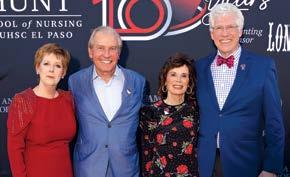

Since 2011, the school has made a significant impact in the community by reducing the nursing shortage while graduating students with bachelor’s and master’s degrees. Many of our students are first-generation and nontraditional, with an average age of 27. Hunt School of Nursing students often have challenging family responsibilities, sometimes as the sole financial provider and head of the household. The opportunity to earn a degree has improved the quality of life for them and their families.
The year-long celebration of the school’s 10th anniversary came to a close in May 2022 at the sold-out Cirque de Corazón event. Cirque de Corazón and other fundraising events throughout the year brought in $1.876 million for nursing student scholarships, thanks to the generosity of our supporters from the community.
Because of our partners, our donors, our champions ... the heart of health care continues to beat at the Hunt School of Nursing.
Thank you!
48 HERE | TTUHSC El Paso
Photography by Tommie Morelos, Joe Najera and Jesse Ramirez.
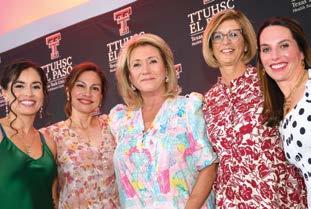




www.ttuhscepimpact.com 49
Empowering Borderplex Talent
Seven Foster School of Medicine students given financial boost thanks to hometown scholarship
By Aaron Bracamontes
El Paso’s mountains, sunsets and other breathtaking views can help alleviate the stress of attending medical school. That’s just one of the benefits of being a student at the Foster School of Medicine, according to first-year student Daniel Lara.


Lara and six other first-year students from El Paso are living their dreams of attending the Foster School of Medicine in their hometown, thanks to the new Medical Student Empowerment Fund.
Once Lara learned he was accepted into the Foster School of Medicine, he was determined to see the journey through, but instantly had to start considering his finances. Lara had saved some money working as a lab assistant throughout undergrad, but knew he would be dependent on student loans.
The crash course of applying for loans included educating himself on the different types of loans and trying to calculate the payment plans. His stress level was complicated by the thought of his debt constantly growing well into the early part of his career.
But then, he learned about the Medical Student Empowerment Fund, which suddenly made the intimidating calculations much more manageable.
“I knew medical school would cost a great amount of money, so I saved as much as I could while studying,” said Lara, who graduated from Valle Verde Early College High School in El Paso’s Lower Valley. “Once I found out I got the scholarship, all of that pressure and anxiety went away, and now I was able to shift my focus to school.”
The Medical Student Empowerment Fund supports scholarships for students with financial need, preferably residents of El Paso County or graduates of El Paso high schools. The competitive scholarships can be renewed for all four years of medical school.
The scholarship fund was made by El Paso community leaders to benefit the lives of El Paso students as well as the patients the future physicians will serve. With more than 2 million people living in the Borderplex, many residents in the region are medically underserved, highlighting an urgent need for homegrown health care heroes.
“I always say about this city: We all want to come together and help each other,” said Lara, who grew up in the Ascarate Park neighborhood, close to the U.S.-Mexico border. “When I graduate and finish my residency, I want to stay close to home and serve the area that helped me grow up.”
Lara knows the pros and cons of leaving the city for an education. He spent four years at Grinnell College in Iowa. The new setting allowed him to focus on school, and it forced him to adapt. However, to become a physician, he wanted to be in El Paso, where he can relax by hiking in McKelligon Canyon, rest by sleeping in his own room, and stay motivated by envisioning the difference he can make in the Borderplex.
“Coming home has made it easier for me to streamline my work,” Lara said. “Being close to family and friends is a support system with people who love me and want to see me succeed. It drives me forward.”
50 HERE | TTUHSC El Paso




www.ttuhscepimpact.com 51
El Pasoan Daniel Lara is poised for success at the Foster School of Medicine, thanks to the assistance of the Medical Student Empowerment Fund.













































 By Charlotte Tallman
By Charlotte Tallman











 — Glenn Fennelly, M.D., M.P.H., professor and chair of the Foster School of Medicine’s Department of Pediatrics
— Glenn Fennelly, M.D., M.P.H., professor and chair of the Foster School of Medicine’s Department of Pediatrics










































